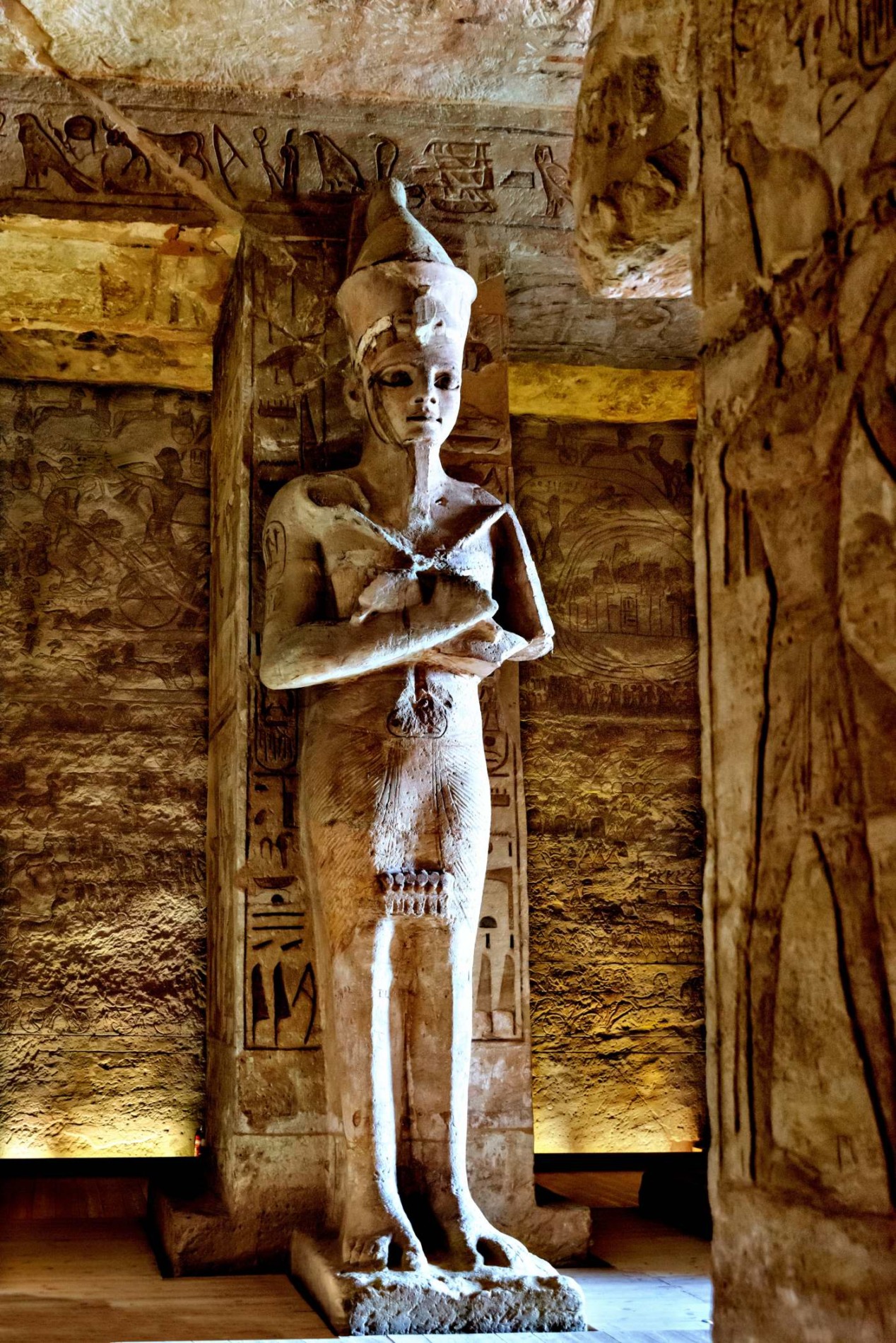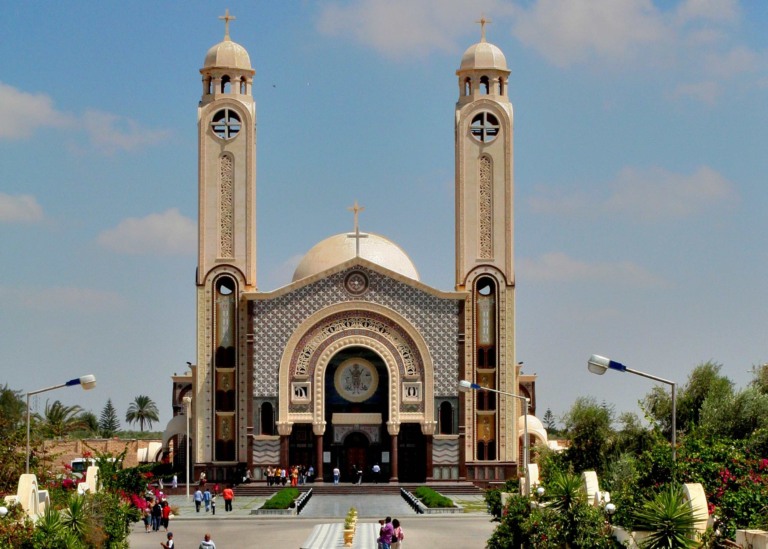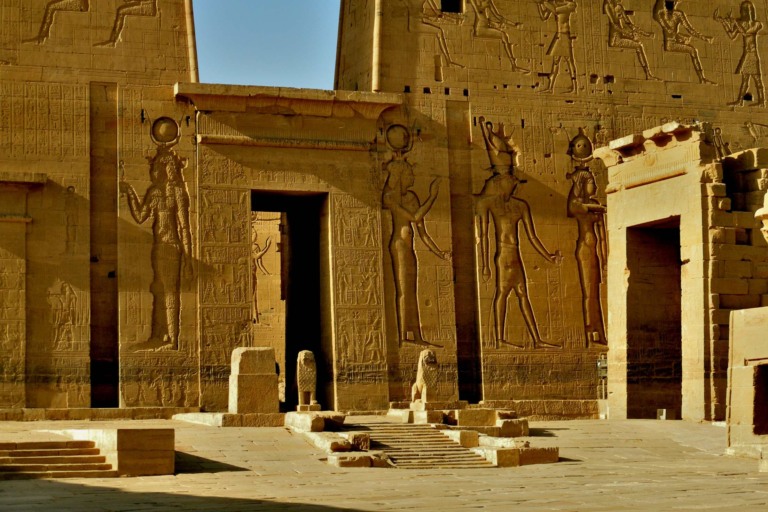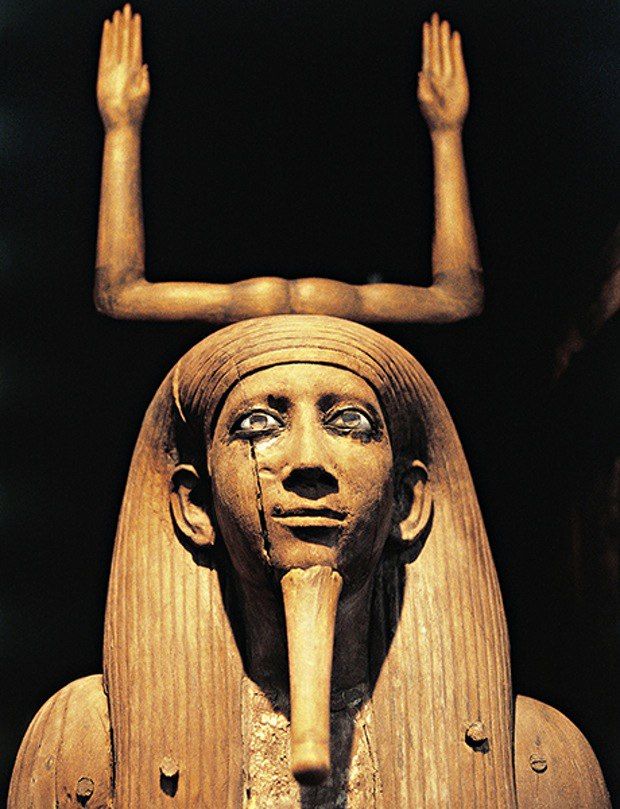Abu Simbel is an important historical site with two huge rock temples. It is near the border with Sudan in the village of Abu Simbel, which is in the governorate of Aswan in Upper Egypt. It is on the west side of Lake Nasser, about 230 kilometers (140 miles) southwest of Aswan or 300 kilometers (190 miles) by road. In the 13th century BC, during the reign of Pharaoh Ramesses II of the 19th Dynasty, the twin temples were carved out of the side of a mountain.
Abu Simbel Temples Facts
They are a tribute to King Ramesses II that will last for a long time. His wife, Nefertari, and their children are shown as smaller figures at his feet. They were thought to be less important, so they were not drawn on the same scale. This is to remember that he won the Battle of Kadesh. Their huge rock reliefs on the outside have become famous. The whole temple complex was moved to a higher place in 1968.
So that Lake Nasser, which was made by the Aswan Dam, wouldn’t flood it. It was a part of the International Campaign to Save the Monuments of Nubia. Kazimierz Michalowski, a Polish archaeologist from the Polish Centre of Mediterranean Archaeology at the University of Warsaw, put a dome-shaped building on top of an artificial hill to make the Abu Simbel Temples. Since 1979, they have been part of the UNESCO World Heritage Sites and are known as the Nubian Monuments from Abu Simbel to Philae.
Abu Simbel Original Location
During his rule, Ramesses II built a lot of things in Egypt and Nubia, which was part of Egypt at the time. The Egyptians valued Nubia a lot because it was where they got gold and many other valuable trade goods. So, he built several big temples there to show the Nubians how powerful Egypt was and to make the Nubians more like Egyptians.
The rock-cut temples near the modern village of Abu Simbel, on the border between Lower Nubia and Upper Nubia at the Second Nile Cataract, are the most famous. There are two temples: the Great Temple, which is dedicated to Ramesses II, and the Small Temple, which is dedicated to Queen Nefertari, who was his most important wife. The temple complex was built over a period of about 20 years, from about 1264 BC to 1244 BC. The “Temple of Ramesses, beloved by Amun,” was its name.
Abu Simbel Rediscovery
Over time, the temples ceased to be in use, and eventually a sand dune covered the Great Temple. By the 6th century BC, the statues in the main temple were already up to their knees in sand. Prior to March 1813, a Swiss researcher by the name of Johann Ludwig Burckhardt discovered the small temple and the top frieze of the main temple. In 1817, the early Egyptologist Giovanni Battista Belzoni was the first person to go there and look around.
Before and After Abu Simbel Relocation
The statue of Ramses the Great is put back together at the Great Temple of Abu Simbel. It was moved in 1967 to keep it from getting wet. In 1959, a campaign to raise money from people all over the world to save the monuments of Nubia started. As the Aswan High Dam was being built, the Nile’s water level was going to rise, which would flood the most southern parts of this ancient civilization. At the Nubian Museum in Aswan, there is a model that shows where the temple was and where it is now in relation to the water level.
Two Temples of Abu Simbel
There are two temples in the complex. The bigger one is dedicated to Egypt’s three state gods at the time, Ra-Horakhty, Ptah, and Amun, and has four large statues of Ramesses II on the front. The smaller temple is for the goddess Hathor, who is represented by Ramesses’ most beloved wife, Nefertari. The temple is now available to everyone. Two of the 66-foot-tall (20-meter) seated statues of Ramses stand on either side of the main temple’s entrance.
They are set against the cliff’s recess. Small figures of Ramses’ children, his queen “Nefertari,” and his mother “Muttuy” are carved around their feet (pronounced Mut-tuy, or Queen Ti). Graffiti that Greek mercenaries working in Egypt in the sixth century BCE wrote on the southern pair has given us important information about the early history of the Greek alphabet. The temple itself pays tribute to the sun gods Amon-Re and Re-Horakhte.
It consists of three rooms that extend 185 feet (56 meters) into the cliff and connect via a tunnel. More statues of the king made of Osiride and paintings of his supposed victory at the Battle of Kadesh are placed in the halls. Around February 22 and October 22, the first rays of the morning sun reach all the way through the temple and shine on the shrine in the innermost sanctuary. Nefertari built a smaller temple to the goddess Hathor just to the north of the main temple. It had 35-foot-tall (10.5-meter-tall) statues of the king and queen.
Nefertari Temple Abu Simbel
Small Temple after relocation: The temple of Hathor and Nefertari, also called the Small Temple, was built about 100 meters (330 feet) northeast of the temple of Ramesses II. It was dedicated to the goddess Hathor and Ramesses II’s chief consort, Nefertari. This was the second time in the history of ancient Egypt that a temple was built for a queen. The first time was when Akhenaten gave a temple to Nefertiti, his great royal wife.
The large gate separates the two groups of colossi that are carved into the rock facade. The king and his queen are shown on the statues, which are just over 33 feet tall. On either side of the entrance are two statues of the king. The south colossus shows the king with the white crown of Upper Egypt, and the north colossus shows the king with the double crown.
This is one of the few times in Egyptian art where the size of the statues of the king and his wife are the same. Traditionally, the statues of the queens stood next to those of the pharaoh, but they were never taller than his knees. In the 24th year of his rule, Ramesses took his wife to Abu Simbel.
There are small statues of princes and princesses next to their parents, just like in the Great Temple of the King. In this case, they are all in the same place: on the south side, to the left as you face the gateway, are princes Meryatum and Meryre, princesses Meritamen and Henuttawy, and princes “Pareherwenemef” and “Amun-her-khepeshef” On the north side, the same figures are in the opposite order. The plan for the Small Temple is a simpler version of the plan for the Great Temple.






